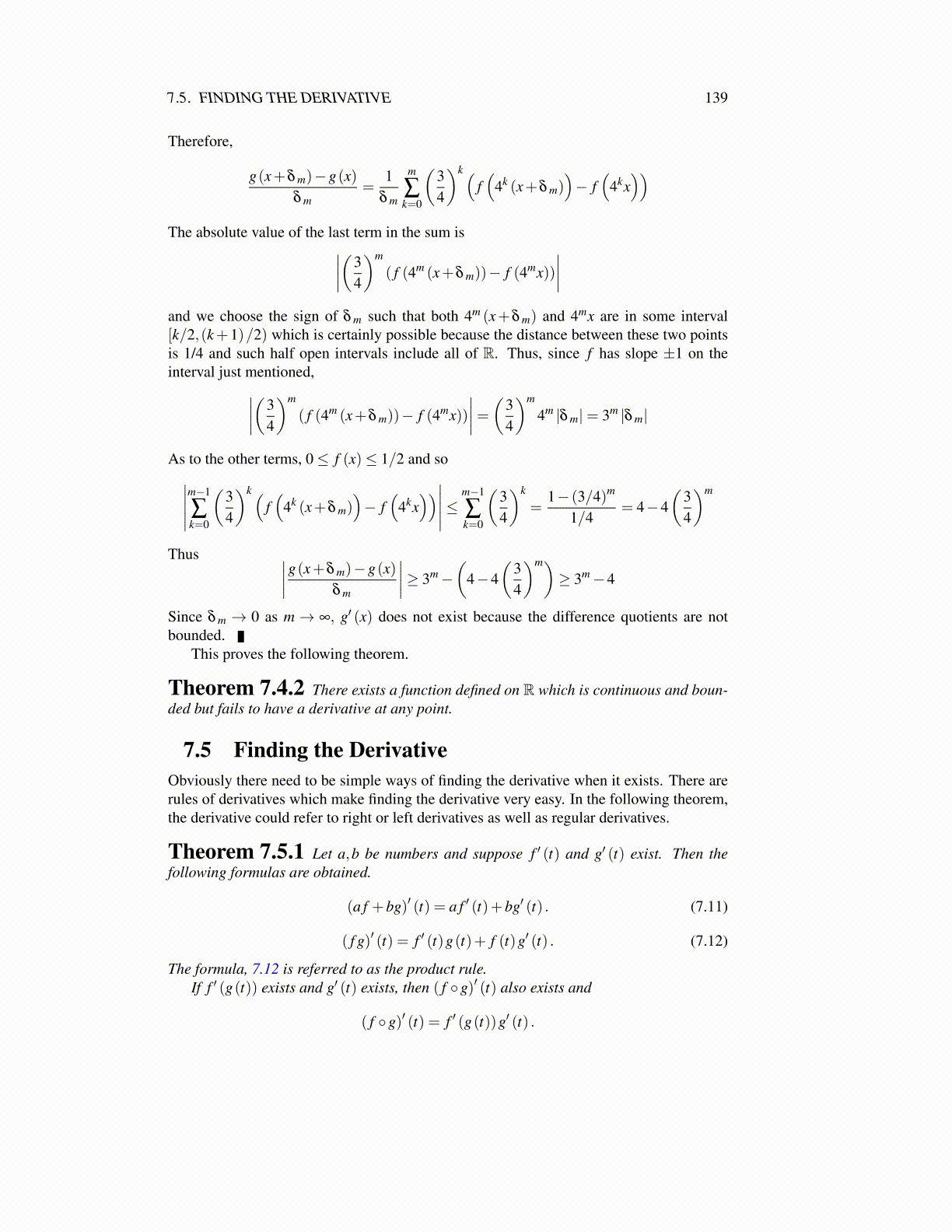
7.6. LOCAL EXTREME POINTS 139
Therefore, the assertion is true for n =−1. Now consider f (t) = t−n where n is a positiveinteger. Then f (t) = (tn)−1 and so by the chain rule,
f ′ (t) = (−1)(tn)−2 ntn−1 =−nt−n−1.
This proves 7.12.Finally, if f ′ (t) exists,
f ′ (t)h+o(h) = f (t +h)− f (t) .
Divide by h and take the limit as h→ 0, either a regular limit or a limit from one side or theother in the case of a right or left derivative.
f ′ (t) = limh→0
(f (t +h)− f (t)
h+
o(h)h
)= lim
h→0
f (t +h)− f (t)h
.
Note the last part is the usual definition of the derivative given in beginning calculuscourses. There is nothing wrong with doing it this way from the beginning for a function ofonly one variable but it is not the right way to think of the derivative and does not generalizeto the case of functions of many variables where the definition given in terms of o(h) does.
Corollary 7.5.2 Let f ′ (t) ,g′ (t) both exist and g(t) ̸= 0, then the quotient rule holds.(fg
)′=
f ′ (t)g(t)− f (t)g′ (t)
g(t)2
Proof: This is left to you. Use the chain rule and the product rule.Higher order derivatives are defined in the usual way. f ′′ ≡ ( f ′)′ etc. Also the Leibniz
notation is defined bydydx
= f ′ (x) where y = f (x)
and the second derivative is denoted as d2ydx2 with various other higher order derivatives
defined in the usual way.The chain rule has a particularly attractive form in Leibniz’s notation. Suppose y= g(u)
and u = f (x) . Thus y = g◦ f (x) . Then from the above theorem
(g◦ f )′ (x) = g′ ( f (x)) f ′ (x) = g′ (u) f ′ (x)
or in other words, dydx = dy
dududx . Notice how the du cancels. This particular form is a very
useful crutch and is used extensively in applications. Of course the problem is that wereally don’t know what du is. Nevertheless, it is great notation and in fact this can be madeprecise, but this book is on classical analysis.
7.6 Local Extreme PointsWhen you are on top of a hill, you are at a local maximum although there may be otherhills higher than the one on which you are standing. Similarly, when you are at the bottomof a valley, you are at a local minimum even though there may be other valleys deeper thanthe one you are in. The word, “local” is applied to the situation because if you confineyour attention only to points close to your location, you are indeed at either the top or thebottom.